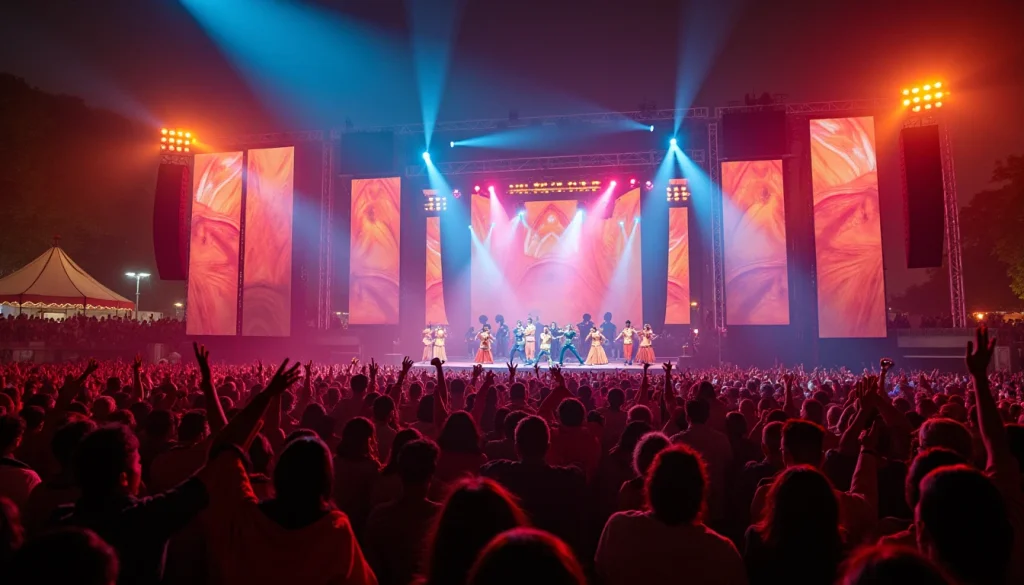The global explosion of K-pop has redefined live concert culture across Asia, creating a unique cultural phenomenon that transcends borders. From Seoul’s massive stadium shows to intimate fan meet-and-greets in Jakarta, K-pop concerts are not just entertainment events but cultural landmarks. The industry’s emphasis on visually stunning performances, choreography, and audience interaction has set new standards for live experiences. While ticket prices can be prohibitive (often exceeding $500 for premium seats), the sheer scale of attendance—like the record-breaking 1 million attendees for BTS’ Map of the Soul tour in 2022—underscores its global appeal.
In contrast, Bollywood concerts maintain a more localized charm. The genre’s blend of dance, drama, and song has long been a staple at outdoor events in India, Pakistan, and Bangladesh. Unlike K-pop, which prioritizes innovation, Bollywood shows often rely on tried-and-true formulas, with elaborate stage designs and star-studded lineups. However, attendance numbers pale in comparison—average audiences hover around 30,000 per event—which reflects the region’s economic constraints rather than disinterest.
Chinese/Taiwanese Concerts: Balancing Tradition and Modernity
The Chinese pop scene offers a fascinating blend of traditional elements and modern influences. While concerts by established stars like Jay Chou or TFBOYS often draw massive crowds (with some events selling out in minutes), newer acts are beginning to carve their own niches. The industry’s emphasis on storytelling through music videos and live shows has created a cult following, particularly among younger audiences. However, ticket prices remain a barrier—average prices for premium tickets start at $100, limiting accessibility for lower-income fans.
In Taiwan, the rise of independent musicians has democratized the concert experience. From intimate cafes to outdoor festivals, artists are experimenting with unconventional formats that prioritize authenticity over grandeur. This shift aligns with global trends towards more inclusive and diverse entertainment, reflecting the region’s evolving cultural landscape. Despite these innovations, attendance numbers remain modest compared to South Korea or Japan, suggesting a need for greater promotional efforts.

Japanese Live Performances: Anime, Rock, and Cultural Identity
Japan’s live entertainment scene is deeply intertwined with its pop culture identity. From sold-out arena shows by J-pop idols like Arashi to massive outdoor festivals featuring rock bands like Queen, the country’s music industry continues to dominate regional charts. The genre’s emphasis on visual spectacle—think elaborate stage designs, pyrotechnics, and synchronized dance routines—has set a benchmark for live performances worldwide.
The rise of anime-inspired concerts has further expanded the scope of Japanese entertainment. Events featuring themes from popular series like My Hero Academia or Attack on Titan attract both die-hard fans and casual attendees, blending nostalgia with cutting-edge technology. While ticket prices can be steep (often exceeding $200 for premium seats), the unique cultural value of these events ensures high attendance rates—especially among younger demographics.
South East Asian Concerts: Niche Markets and Emerging Trends
The live concert scene in South East Asia is characterized by its diversity and fragmentation. While countries like Thailand, Malaysia, and Indonesia have thriving music scenes, they remain largely insular due to language barriers and differing cultural preferences. For instance, local idols like Thai boy band 1980s Boy often sell out venues, reflecting the region’s growing appetite for homegrown talent.
The rise of digital platforms has democratized access to live performances across the region. From virtual concerts by Taiwanese rapper GEMINI to YouTube live streams of Singaporean singer JJ Lin’s shows, the internet has bridged gaps between fans and artists. This shift is particularly significant in countries with limited physical infrastructure for large-scale events—making online platforms an essential tool for engagement.
Conclusion: The Dynamic Landscape of Asian Concert Culture
The diversity of live concert experiences across Asia highlights the region’s rich cultural tapestry. From K-pop’s global dominance to Bollywood’s localized charm, each market offers unique insights into how entertainment intersects with identity and tradition. As technology continues to reshape the industry—from VR concerts to AI-driven performances—the future of live events in Asia will be as dynamic and exciting as ever.
In this evolving landscape, one thing remains clear: Asian audiences are not just consumers but active participants in shaping the next wave of pop culture. Whether through sold-out stadiums or intimate online interactions, the region’s vibrant entertainment scene promises to keep us on our toes for years to come.




